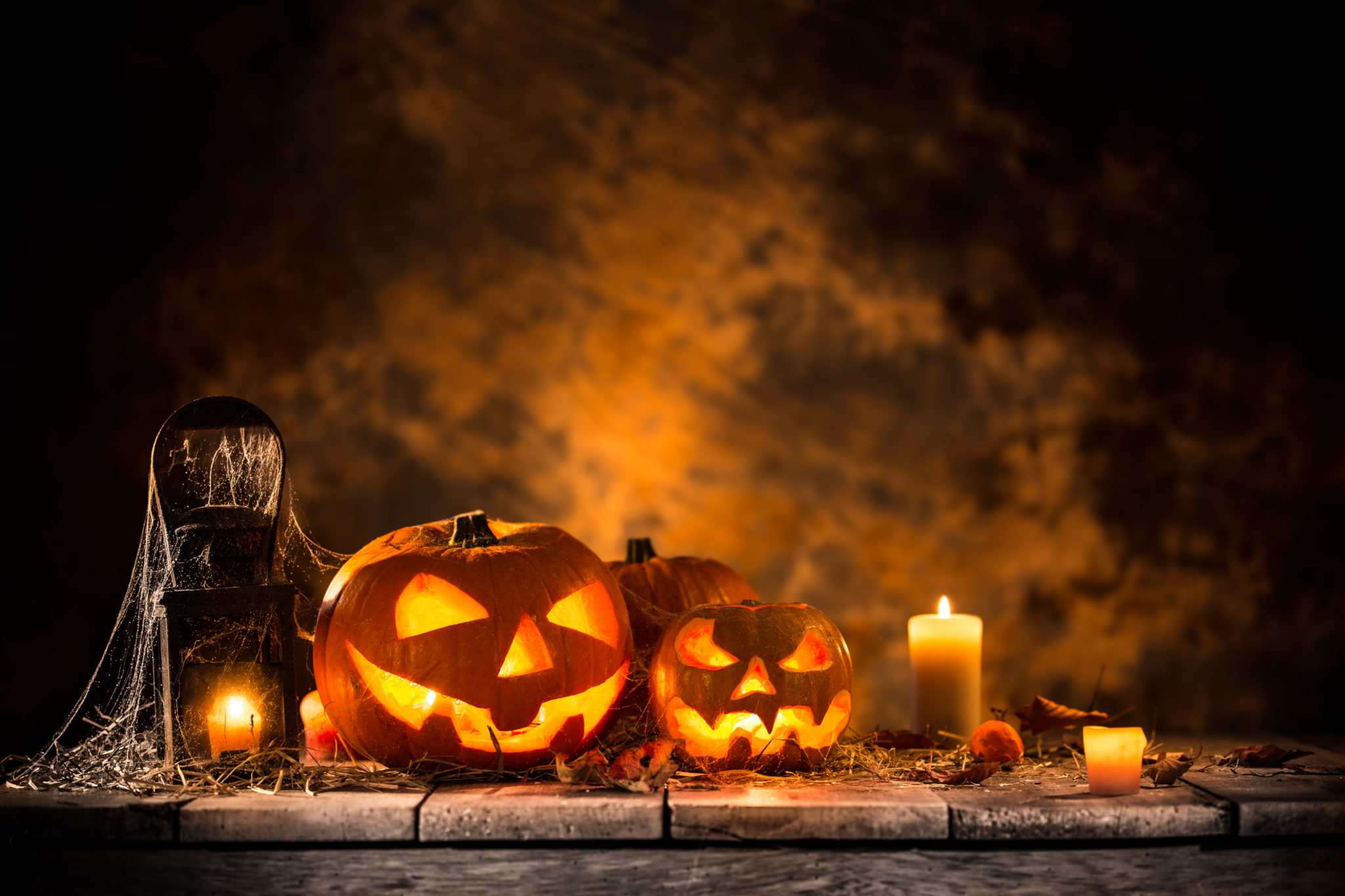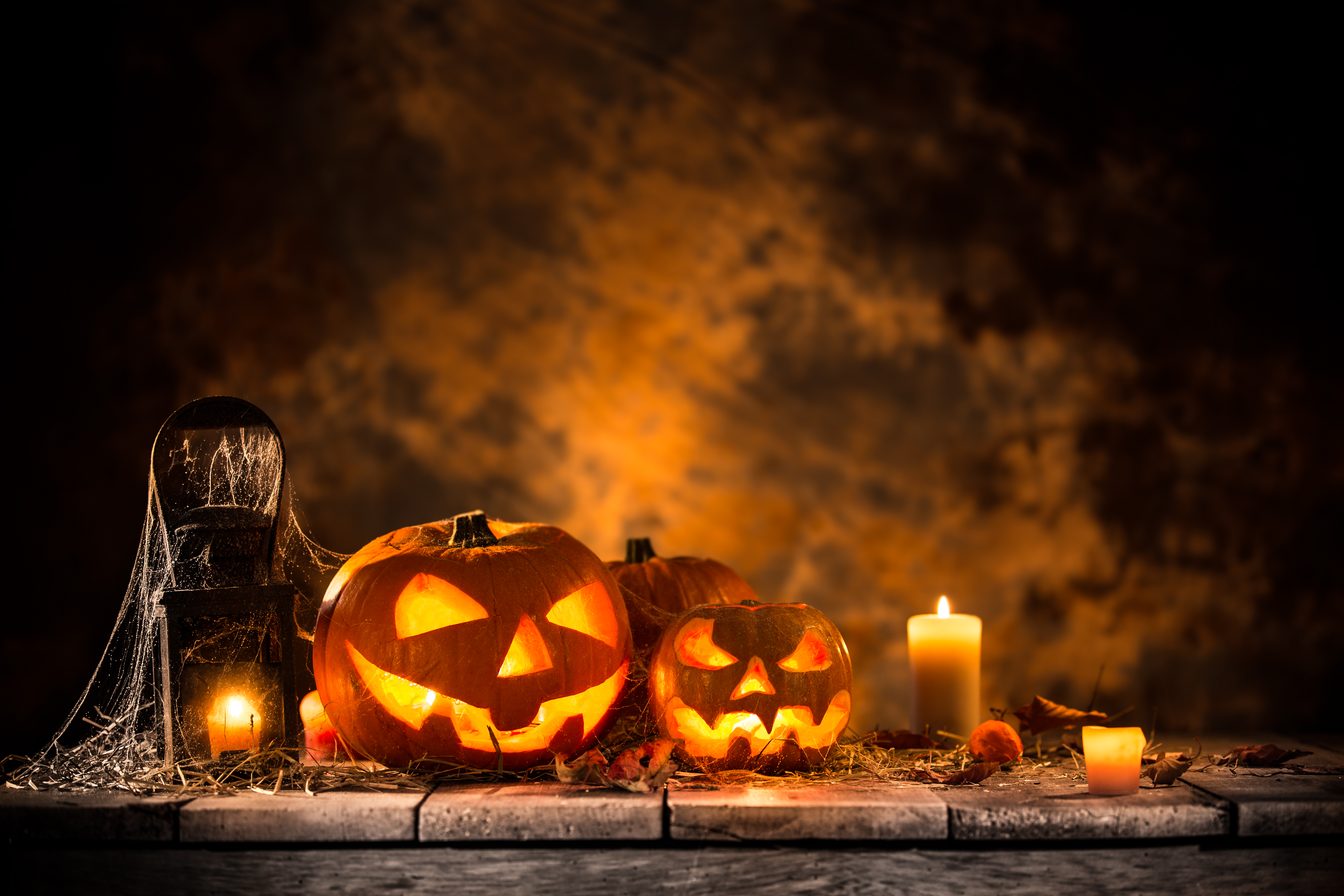
 About 10,100 fires were reported to local stations on Halloween from 2014 to 2016, according to the U.S. Fire Administration. Don’t let those numbers spook you, though — there are plenty of things you can do to keep yourself and your little goblins safe this October 31st. Let’s break it down into the three Cs of the holiday: costumes, candy and candles.
About 10,100 fires were reported to local stations on Halloween from 2014 to 2016, according to the U.S. Fire Administration. Don’t let those numbers spook you, though — there are plenty of things you can do to keep yourself and your little goblins safe this October 31st. Let’s break it down into the three Cs of the holiday: costumes, candy and candles.
Costumes
Make sure you and your little ones are dressed up in fire-safe outfits – be aware of capes, skirts, and other such accoutrements dragging the ground. Same goes for loose, billowy sleeves. Anything that drags could get tangled up in extension cords (which should be out of the way of foot traffic to begin with, but we’ll get to that) or hung on precarious decorations, which often include candles. And if your Halloween festivities include a bonfire, make sure any loose clothing like sleeves are rolled up and long hair is tied back.
Candy
The fun-sized packages of Skittles and Twix themselves don’t exactly pose a threat, but the distraction of constantly answering the front door certainly does. Different localities allow trick-or-treating to begin at different times, so be sure to double-check when to expect a ringing doorbell before making plans for the night. The evening of Halloween may not be the best time to try your hand at baking bread or cook up a giant pot of chili, at least not once Dorothy and the Tin Man, superheroes, fairies, and dinosaurs start showing up on your doorstep.
Cooking equipment is the leading cause of house fires in the U.S., and distraction is often the culprit. It’s easy to get distracted by the stream of Harry Potters and Elsas appearing and asking for candy, and next thing you know the pot on the stove is bubbling over or smoke is pouring out of the oven. Finish up all your cooking early in the day so you don’t have to worry about dashing back and forth between the kitchen and the foyer.
Candles
So many Halloween decorations involve flames — jack-o-lanterns, those little paper bags with tea lights lining your sidewalk, that spooky-looking old candlestick that you set out next to the candy bowl. But with kids hyped up on pumpkin-shaped Reese’s cups and those caramel apple suckers, you never know what they’re going to run into or knock over, so you can never be too careful with those flames. The good news is, little battery-powered tea lights are just as easy to find as the old-fashioned originals, and when you stick one down inside a pumpkin or a bag with Frankenstein’s face on it, you’d never know the difference. It’s also, obviously, much less of a fire hazard.
On a related note, be aware of other decorations. If you’re one of those people who drags out the autumnal decor and drapes creepy-looking spider webs and hangs light-up, moving skeletons in your trees, more power to you. Just make sure that power is safe. Use outdoor lights outdoors and indoor lights indoors, make sure your power cords aren’t frayed, always turn off any string lights and other electrical decorations before heading to bed, and don’t let those extension cords block doorways or other areas that get a lot of foot traffic. And please, please, don’t hang any candles with actual flames in the trees. We’ll repeat that sentiment come next month when Christmas decorations are coming out of the attic.
In more than 800 home fires from 2009 to 2013, decorations were the first items to ignite, and nearly half of those decorations were too close to a heat source. Keep this in mind while you’re decorating the inside of your home.
For more information about Halloween safety, check out the NFPA’s fact sheet.

